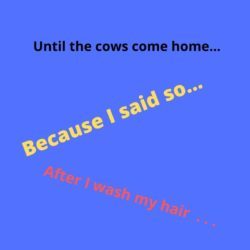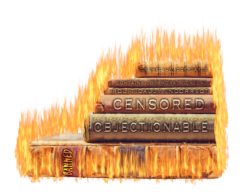Arlene Miller's Blog, page 32
November 22, 2019
Interjections!
 Image by rawpixel from Pixabay
Image by rawpixel from PixabayWow! Finally! We are at the last installment of the series about the parts of speech. Yup! And this post is about interjections.
Wow! Finally! Yup! These are all interjections, the eighth part of speech we will discuss.
What is an interjection? An interjection is a word that expresses emotion. Here are some things to know about interjections:
Interjections have no grammatical role in a sentence and are simply words that express strong emotion. Nouns are subjects or objects. Verbs provide the action in the sentence. Pronouns take the place of nouns. Adjectives describe nouns. Adverbs modify verbs. Prepositions appear in phrases to tell where or what kind (and modify nouns or verbs in the sentence). Conjunctions connect words, phrases, or clauses. But interjections have no role like any of these. They simply stand there alone to express emotion.
Interjections can be made up: Yowma! That’s a great car!
Interjections can be more than one word long: Hell’s bells! or Oh, my!
Interjections can be followed by a comma rather than an exclamation mark: Well, I hope so.
Interjections don’t necessarily have to be at the beginning of a sentence, but they generally are: That is some dog, huh?
Interjections are generally used in informal English or dialogue. They are not usually used in formal writing or speaking.
Interjections probably shouldn’t be overused.
Interjections, like anything else, should not be followed by multiple exclamation points!

That is just about it for interjections. Pretty simple. Short blog post.
I could tell you about my new home: Florida!
I have now been in Florida over two months, although I am currently in California to see my son, my friends, have Thanksgiving with friends here, and ready my house for sale, which is imminent. It just has not closed yet.
I am staying at my son-in-law and daughter’s house, but they are gone for work and won’t be back until May. I have looked around for someplace to live there, but mostly online so far. I will start looking more seriously after the new year, but probably will stay housesitting for them until they return.
I have attempted to get into the writing world there. I have joined FAPA, which is Florida Authors and Publishers Association. It is a sister organization to BAIPA (Bay Area Independent Publishers Association), which I was active in in California. However, unlike BAIPA, FAPA does not have regular meetings, probably because it covers the entire state. They do have events, but I have seen nothing so far. I have received no e-mails from them, have lost all the information I put in my profile on their website, and frankly am disappointed so far.
I have also joined FWA, Florida Writers Association. It is similar to California Writers. However, once you join you can go to any meetings anywhere you want in Florida. The problem is that most of the meetings I have read about are critique groups. I am used to meetings with speakers. I don’t really need a critique group right now.
However, I have met a couple of book people online. I met one on Next Door in some kind of book thread. She has written some books, as has her husband. She writes about business networking. She and her husband did an author event for local authors at one of the branches of the library in Tampa, so I went to that. Then, I met someone in an IBPA (Independent Book Publishers Association) webinar. IBPA is the umbrella association for both BAIPA and FAPA. They asked people to write where they were from in the webinar question-and-answer-space, and someone wrote from Tampa, so I wrote I had just moved near Tampa. I saw she belonged to FAPA too, so she messaged me and we finally met — at Barnes and Noble, of course! She is a publisher with an education background. She publishes other people’s books.
Finally, I went to a big author event in St. Petersburg, sponsored by the Tampa Times. They had some big-time authors there, including Dave Barry, Meg Cabot and R. L. Stine. Then, there were also lesser known authors I (like me), who were vendors. I met a poet who was a vendor. He told me about a author event in Venice (Florida, not Italy) in March, so I signed up to do that. So I need to get all my marketing stuff in order — meaning getting new stuff. Venice is about an hour south of me right now.
Workwise, I have been keeping up with the blog posts, as you notice….I am updating my big workbook, procrastinating on revising the dating memoir, and planning to write the business writing book next year (which is soon!)
Happy Thanksgiving!
November 15, 2019
Conjunctions: Part 2 – Subordinating
 When we think about conjunctions (and who even does that!), we think about connecting words such as the FANBOYS conjunctions (for, and, nor, but, or, yet, so) that we talked about last week. However, there is another category of conjunctions: subordinating.
When we think about conjunctions (and who even does that!), we think about connecting words such as the FANBOYS conjunctions (for, and, nor, but, or, yet, so) that we talked about last week. However, there is another category of conjunctions: subordinating.
Subordinating conjunctions begin subordinate clauses. Here are some examples of subordinate clauses. The subordinating conjunction is in italics:
although I am going on vacation
because I am working late
until the cows come home
whenever I hear that song
before the play starts
since he moved away
after I get home
You know that these are clauses (not phrases) because there is a subject and a verb in the words that follow each of these conjunctions. When you put one of these clauses (which cannot stand on their own) with an independent clause (sentence), you have a complex sentence:
Although I am going on vacation, I will be working through Wednesday.
I will miss dinner because I am working late.
I will be practicing the same piano piece until the cows come home!
Whenever I hear that song, I think about my brother.
I am getting some food before the play starts.
Since he moved away, the neighborhood is very quiet.
We can watch television after I get home.
Because they are connecting words, coordinating conjunctions are generally between words, phrases, or sentences:
Ted and Sally
to the movies and to the park
I am reading my book, and I am eating dinner.
Coordinating conjunctions don’t begin sentences (well, we said sometimes you can start a sentence with one, but in that case they are generally connecting your sentence with the sentence before it.).
As you see by the examples, subordinating conjunctions can begin sentences, or they can be in the middle. When they appear in the middle of a sentence, they look as if they are connecting two clauses, but they aren’t. They belong to one of the clauses:
I will miss dinner because I am working late.
You can tell that because is not connecting two sentences because if you flip them around, the meaning changes:
I am working late because I will miss dinner.
Because clearly belongs to I am working late.
However, you can always flip the clauses around and the sentence still makes sense. And the subordinating conjunction always stays with its clause. Here are the examples above switched around.
I will be working through Wednesday, although I am going on vacation.
Because I am working late, I will miss dinner.
Until the cows come home, I will be practicing the same piano piece.
I think about my brother whenever I hear that song.
Before the play starts, I am getting some food.
The neighborhood is very quiet since he moved away.
After I get home, we can watch television.
Now, look at the punctuation. Whenever the subordinate conjunction begins the sentence (like this one), there is a comma after the clause (because it is introductory material). However, when the subordinate clause comes at the end of the sentence, there is usually no comma because the clause is necessary to these sentences. The exception is although, which usually introduces added information (as in the first example, where I would say the comma is optional).
Sometimes these conjunctions are not conjunctions at all, but prepositions. Do you care? Probably not. However, you can tell by what comes after them. If just an article and a noun follow, the word is being used as a preposition. If a subject and verb follow, it is a subordinating conjunction beginning a clause.
after the game (preposition)/ after the game is over (subordinating conjunction)
until dinner/ until I finish dinner
before bedtime/ before I go to bed
Teachers many times tell young students (incorrectly, but for their own good at the time) not to begin sentences with because. Why? Many times students write the subordinate clause without adding the independent clause, and they wind up with a sentence fragment: Because I stayed home. Obviously, it is fine to begin a sentence with because or any other subordinating conjunction — as long as you finish the sentence.
Next week we finish the series of the parts of speech with INTERJECTIONS.
November 8, 2019
Conjunctions: Part 1 – Coordinating
Moving on to the next in the series of the parts of speech: conjunctions.
 Image by Gerd Altmann from Pixabay
Image by Gerd Altmann from PixabaySay the word conjunction, and most people will respond with and.
And is the most common conjunction. Conjunctions are connecting words. There are actually two kinds of conjunctions, coordinating and subordinating. This week we will talk about coordinating conjunctions. Coordinating conjunctions connect words, phrases, clauses, and sentences. There are seven of them, and the initial letters make the “word” FANBOYS. So I call them the FANBOYS conjunctions: for, and, nor, but, or, yet, so.
Here are some examples of how conjunctions connect words, phrases, clauses, and sentences:
bacon and eggs (connecting two words)
to the movies or to the beach (connecting two phrases)
after I eat dinner but before I go to bed (connecting clauses)
I finished my chores, so I can go to the mall. (connecting sentences)
Connecting Sentences
Two or more sentences that are connected make a compound sentence. You can use a conjunction or you can use a semicolon to connect related sentences to make a compound sentence:
The meeting is at eight o’clock; we should get our coffee now.
The meeting is at eight o’clock, so we should get our coffee now.
When you use a semicolon, don’t use the conjunction.
What About Then?
Notice that there is no T in FANBOYS. Sometimes people try to connect sentences with the word then, but then is not a conjunction and cannot be used to connect sentences.
I finished reading my book, then I returned it to the library. Not correct.
I finished reading my book, and then I returned it to the library. Correct.
I finished reading my books; then I returned it to the library. Correct.
Oxford Comma
The argument continues about whether or not to use a comma before the and in a series:
My favorite colors are blue, purple, pink and yellow. OR
My favorite colors are blue, purple, pink, and yellow.
Either one is fine. That comma is called the Oxford comma and is optional. I use it, and I advise everyone to use it. Sometimes it avoids confusion in a series. But it is up to you. One piece of advice: Use it or don’t use it, but be consistent in one piece of writing. Don’t use it in some places and not in others — unless you are not using it and then come across one instance where you think you need it for clarity.
Can I Start a Sentence with a Conjunction?
The old rule was that you could not start a sentence with a conjunction. The new rule is that you can. Most of the time, you start a sentence with a conjunction for effect or emphasis. I do it in my grammar books — and of course novelists do it in dialogue. But (I did it right there) beginning a sentence with a conjunction is fine in narrative too. You don’t want to start every sentence with a conjunction, you want to use an appropriate conjunction, and you want to have a reason for using a conjunction, which, remember, is still a connecting word…so it need to connect with something you previously wrote.
Informal writing like promotional writing and advertisements certainly use conjunctions to begin sentences — when they even use complete sentences! However, for a business letter, a query letter, a job cover letter, a college entrance letter, I would stick to formal English and not begin sentences with conjunctions.
Other Parts of Speech
Weeks ago, we talked about words belonging to more than one part of speech. Some of the FANBOYS conjunctions can be other parts of speech:
FOR can also be a preposition:
I cannot go out, for I have too much to do. (conjunction)
I made a cake for you. (preposition)
YET can also be an adverb:
She is small, yet very strong. (conjunction)
Are we there yet? (adverb)
SO can also be an adverb:
I did my job really well, so I got a promotion. (conjunction)
This burrito is so big, I cannot finish it. (adverb)
NEXT WEEK: subordinating conjunctions
November 1, 2019
A Little Post About Little Words: Prepositions (More of the Parts of Speech Series)
If you go back far enough, you will find the beginning of this series about the parts of speech: nouns, pronouns, verbs, adjectives, and adverbs. Yikes! Did I skip
 In, Out, Up, Down
In, Out, Up, DownImage by Gerd Altmann from Pixabay
verbs? Was I waiting for later because verbs have so many aspects? I don’t remember, but I don’t see the verb post. In any case, today we will talk about prepositions.
What Are Prepositions?
Usually, I see prepositions defined as follows: a word governing, and usually preceding, a noun or pronoun and expressing a relation to another word or element in the clause. Please let me know if you can figure out what that means!
Here is what I say: A preposition is usually a little word. It always appears in a phrase, and the phrase tells where or how or what kind. Remember that a phrase is a small (usually) group of words that does not have both a noun and a verb. Prepositional phrases have nouns or pronouns, and they never have verbs. The structure of a prepositional phrase is always pretty much the same. The phrase always begins with the preposition. Then comes an article (a, an, the) most of the time, but not always. Then comes the noun or pronoun (and any adjectives that might describe the noun or pronoun). Here are examples or prepositional phrases.
in the house (tells where)
at school (tells where; this one has no article)
by that famous author (what kind)
after the party (when)
before school (when)
with stripes (what kind)
below the clouds (where)
There are lots of prepositions. Here are some others: beneath, beside, along, out, up, down, within, without, past, until, since. There are even some multi-word prepositions: along with, because of, according to, and more. But the prepositional phrase always follows the same format. Preposition/article/noun, with the variations described above.
What Do They Do?
Prepositional phrases act as adverbs or adjectives, further described as adverbial or adjectival phrases. If they tell where or when, they are modifying verbs and acting as adverbs. If they tell what kind, they are describing nouns or pronouns and are functioning as adjectives.
I like the dress with the blue trim. (with the blue trim tells what kind and describes dress – adjectival)
Please come over after the dance. (after he dance tells when and describes come over – adverb)
Sometimes They are Adverbs and Not Prepositions
Sometimes you will see a preposition without a phrase, maybe hanging out at the end of the sentence: I am going outside. Outside tells where, but it isn’t in a prepositional phrase. So it is not a preposition here. It is an adverb. Here are a few more examples.
I am going in.
Did you go out?
I will see you around.
Sometimes They Are Conjunctions
Sometimes you will see what you think is a preposition followed by a noun and a verb (so it is a clause, not a phrase). In this case, the word is a subordinating conjunction, beginning an adverb clause. Look at the differences here:
Let’s go to the mall after the game. (prepositional phrase)
After the game is over, let’s go to the mall. (adverbial clause beginning with a subordinating conjunction)
I won’t leave until you come home. (adverbial clause)
I cannot leave until five o-clock. (prepositional phrase)
Can I End a Sentence with a Preposition?
Yes, you can. Sometimes. You will see that the rest of the prepositional phrase is actually there, but it is before the preposition:
Whom are you going with? (with whom is the prepositional phrase)
Whom is that book by? (by whom is the prepositional phrase)
Note that we are using whom, not who. That is because it is the object of a preposition, and whom is the objective case.
Where are you at? Nope. This one is wrong. There is no phrase, and you don’t need the preposition at all. Where are you? is enough.
Placement
It doesn’t matter if you know an adverbial phrase from an adjectival. Or whether you know if your word is being used as a preposition or an adverb. But it does matter where you put your prepositional phrase in the sentence. You don’t want to misplace it (like in these examples):
I heard about the meeting in the men’s room.
I am selling an antique desk suitable for a student with thick legs and large drawers.
These mixing bowls are sure to please any cook with round bottoms for efficient beating.
Did you see the medals that I won in the attic?
That boy will feed our dogs in the Metallica tee shirt.
Next Week: Conjunctions! Bet you can’t wait. We will find something interesting about them, I am sure!
October 23, 2019
Boo! Halloween Trivia Quiz
 Image by nancy sticke from Pixabay
Image by nancy sticke from PixabayIt’s that time of year again.
If you live in a cold climate, it is getting cooler.
We are turning the clocks back soon (except for those of you in Arizona).
We are beginning to eat all the Halloween candy we bought to give out (oh, maybe that is just me!).
The leaves have fallen to the ground (or they will soon).
Some people live for Halloween. For others it is just another day. Some will turn off their porch lights so no one will come looking for candy; maybe they know only a few kids will come anyway, so why bother. Others will give out gobs of candy because they live in a neighborhood so Halloween-desirable that parents drive their kids over to Trick or Trick.
Whatever your feelings about autumn and Halloween might be, you will want to know these facts about Halloween! Scroll down for the answers. And before I forget, thank you to the following websites:
Halloween Trivia Quiz
1. What do the two Halloween colors, orange and black, represent?
2. According to legend, what does it mean if you see a spider on Halloween?
3. What is the fear of Halloween called?
4. Where did bobbing for apples originate?
5. Name the person who made the first jack-o-lantern. What country was he or she from?
6. Each year, how many pounds of candy corn are produced?
7. What materials were the first Halloween costumes made of?
8. Which American city holds the record for the most jack-o-lanterns lit at once?
9. The movie Halloween was made in how many days?
10. What is the most popular candy for Halloween?
11. What is the original name for candy corn?
12. Who began the black cat superstition?
13. What were the first jack-o-lanterns made from?
14. When did trick or treating begin, and what was it called?
15. Women, in the 18th century, used to throw apple peels over their shoulders on Halloween, hoping to see what?
16. How much do Americans spend on Halloween, on average?
17. Which state produces more than five times the number of pumpkins as any other state?
18. Where do the Vampire cats live?
19. What was the first individually wrapped candy?
20. The movie Hocus Pocus had a different name before that name. What was it?
Scroll down for the answers:
Answers:
Orange represents the Fall harvest, and black represents death.
That a loved one is watching over you.
Samhainophobia
Ancient Rome
Jack – from Ireland
35 million
Animal heads and skin
Boston, or Keene, New Hampshire. Sources differ.
21
Chocolate
Buttercream candies
The Pilgrims
Turnips
In Medieval times. Back then, it was known as guising in Scotland and Ireland.
Their future husband’s initials.
About $90
Illinois
Central and South America
Tootsie Rolls
Halloween House
October 18, 2019
Essays, Letters, and Memos: Structure
 Image by Lorenzo Cafaro from Pixabay
Image by Lorenzo Cafaro from PixabayI recently received a request to write a blog post about essay writing. Good writing has many criteria, only one of which is correct grammar. When I was teaching 7th grade, we had a writing program we were supposed to follow to the letter. It was a great program, beginning with writing a discrete paragraph and ending with writing an essay. But it dealt mainly with structure. However, just about all the students were able to then write a decent paragraph and a decent essay — because they had learned how to write with a cohesive structure.
Beginning, middle, end. All business and academic writing pieces have those three parts. (Well, fiction does too.)
The discrete paragraphs we taught had eleven sentences each. That is pretty long for one paragraph, but if you are perhaps writing a business memo of one paragraph, it could stretch that long. Here is what the paragraph contained: A topic sentence; the first point you are trying to make followed by two sentences of description (three sentences total); the second point you are trying to make followed by two sentences of description; the third point you are trying to make followed by two sentences of description; the concluding sentence. The first sentence tells the reader what you will be saying, and the conclusion tells them what you have said. Of course, we won’t ever make the mistake many 7th graders do: “I am going to tell you about . . .” for a topic sentence, and “I now have told you about . . . , and I hope you liked it” for a conclusion.
Perhaps you have only two points to make and only one sentence to expand upon each. That would make your paragraph six sentences long. That is also fine. The most important thing is that the paragraph is cohesive and doesn’t wander to another topic with extraneous information in it.
If you take that paragraph structure and blow it up, you have a five paragraph essay:
The topic sentence becomes the introductory paragraph, which is generally two or three sentences and not just one.
The first point you are trying to make becomes the first body paragraph. The body paragraph resembles the discrete paragraph we talked about above. It is likely somewhere between four and ten sentences long, and it all hangs together with one topic. Instead of a concluding sentence, there might be a lead in to the next body paragraph.
The second point you are trying to make becomes, of course, the second body paragraph, and the third point becomes the third body paragraph. Obviously, you can write an essay with three paragraphs (one body paragraph), or four, or seven, or ten, or whatever. But there is always an introductory paragraph and a concluding paragraph as the “bread” with the body paragraphs in the middle as the “filling.”
The concluding paragraph is about as long as the introductory paragraph, a few sentences.
One of the things that keeps the writing flowing is the use of transition words and phrases: First, second, next, in conclusion, finally. Please do not use firstly secondly, thirdly, or first off.
To have students write a five paragraph essay, we would give them topics that lent themselves to five paragraphs, such as “Three Goals I Have for the Future” or “Three Places I Would Like to Visit.”
Seventh grade, college, or adult — it doesn’t matter. To be easy to read and understand, writing needs to flow in an organized manner. The more organized the writing is, the more pleasing to read.
Yes, there are many other aspects to good writing besides the organization: grammar, style, content, appropriateness of tone for audience, etc.
Just to make a plug for myself: I plan to write a business writing book in 2020. The Best Little Business Writing Book Ever!
Florida Life Update: Here I am in Florida. Really don’t know anyone. My daughter and son-in-law are away for their jobs until May. I have joined the local publishing group. However, they don’t have meetings because, I would guess, the group covers the entire state. They have events, but unfortunately nothing coming up. I will look into the writing groups soon (I keep putting it off. ) I believe there are a number of those who meet regularly. So I will be finding my people soon. I hope.I do have tendencies to be a recluse — until I eventually tire of it. And I am going back to Florida to visit my son and my friends next month. Oh, and I have applied for my fictitious business name in Florida, which is bigwords101, The Grammar Diva.
Writing wise, I am slowly getting back into it. I am working on the dating memoir (When Life Hands You Frogs), plan to write the business writing book next year, and have other ideas percolating. Of course, the blog continues!
October 11, 2019
All Kinds of Things About Adverbs
 Image by Gerd Altmann from Pixabay
Image by Gerd Altmann from PixabayWe continue our series of the parts of speech today (when on earth was the last post about parts of speech???)
Adverbs, like adjectives, modify or describe other words. Adjectives describe nouns (or pronouns). Adverbs describe verbs — and sometimes adjectives and other adverbs. They often answer the questions where? when? how? to what extent? Here are a few examples of adverbs modifying those three parts of speech:
She sang loudly. (Loudly is an adverb describing the verb sang. How did she sing?)
She sang very loudly. (Very is an adverb describing the adverb loudly. How loudly? To what extent of loud?)
Jan was extremely intelligent. (Extremely is an adverb describing the adjective intelligent. How intelligent?)
End in -ly
Many adverbs end in -ly, but not all of them. Many adverbs are a form of the adjective with -ly added. Here are some adverbs that are adjectives that add -ly: slowly, grimly, beautifully, helpfully, quickly. Here are some adverbs that do not end in -ly: now, then, soon, afterwards. Here are some words that end in -ly, but are adjectives, not adverbs: lovely, lonely, daily, ugly.
Sometimes also prepositions
Sometimes prepositions turn into adverbs. Prepositions that are not in prepositional phrases are adverbs:
The balloons are inside the house. (Inside is a preposition in the phrase inside the house. The phrase is, however, called an adverbial phrase.)
The balloons are inside. (Inside is an adverb here; there is no prepositional phrase.)
Don’t use them
People who are talking about the craft of writing often warn writers not to use adverbs. They mean not to overuse adverbs. Using strong verbs is more effective than having to describe a verb with an adverb, so use adverbs sparingly: He spoke loudly to his son. He screamed at his son. The first sentence uses an adverb. The second uses a more descriptive verb.
Stay away from filler adverbs
Some adverbs are filler words like um. Avoid them. We use them in conversation, but try not to use them in writing. Or use them very sparingly. Such adverbs include very, really, especially, basically, actually.
Transition words
Words like firstly, secondly, and lastly are often used in writing as transition words. Use first, second, and last instead. And don’t use “first off.”
Placement
Often there is more than once place in a sentence to put an adverb without changing the meaning:
Slowly the snake crept toward the boy.
The snake slowly crept toward the boy.
The snake crept slowly toward the boy.
The snake crept toward the boy slowly.
Doesn’t really make any difference which one you choose.
But sometimes it make a big difference where you put the adverb:
She is only baking the birthday cake. (Although most of us would say this to mean she isn’t baking anything except the birthday cake, technically it means she is baking it, and not doing anything else with it. )
Only she is baking the birthday cake. (No one else is baking the birthday cake.)
She is baking only a birthday cake. (She is not baking anything else.)
And — only is an adverb in the first sentence above because it describes the verb baking. But it is an adjective in the second sentence, modifying she.
Comparative and superlative
Like adjectives, adverbs have comparative and superlative forms. Adverbs use less, least, more, and most for comparative and superlative. Some adjectives do as well, but many adjectives add -er and -est for comparative and superlative.
Adjective: quick, quicker, quickest
Adverb: quickly, more quickly, the most quickly, less quickly, the least quickly
Flat adverbs
Sometimes you will hear someone say, “She drives slow,” rather than “She drives slowly.” In this example, slow is used as an adverb, just like the adverb slowly. But slow is generally an adjective: She is a slow driver.
Is this usage wrong? Well, not exactly. The adjective form used as an adverb is called a flat adverb. Here are some flat adverbs: She drives slow. (probably came into use as an opposite to She drives fast. Fast is both an adverb and an adjective, since there is no fastly.) He learns quick. She sings pretty.
Next week’s post: Writing an essay
And the week after: Halloween post
Next month: The rest of the parts of speech.
And yes, I have now moved to Florida.
October 3, 2019
Banned Books Week
 Image by Prettysleepy2 from Pixabay
Image by Prettysleepy2 from PixabayWell, we just missed the actual Banned Books Week, which was at the end of September, but someone sent me a great article and infographic about banned books, so I will put a link to it in this post.
It was Isaac Asimov who said, “Any book worth banning is a book worth reading.” That certainly seems to be true, as so many of the classics we read in high school have been banned books: Nineteen Eighty-Four, Huckleberry Finn, Catcher in the Rye — even Harry Potter. Many of you of a certain age may have read Hawthorne’s The Scarlet Letter in high school. Not I. Nope. It was banned in my high school (I guess because of what the scarlet letter — A — stood for), so we read The House of the Seven Gables instead. I am quite sure The Scarlet Letter was more interesting!
But times have changed. When I was student teacher, my high school seniors read A Clockwork Orange, which I am quite sure is on the list of banned books. I wasn’t, however, allowed to show the movie. And when I taught junior high, I had my advanced students read Nineteen Eighty-Four.
The Marshall University Libraries conduct research on banned books in the United States and have defined a banned book as one that has been “removed from a library, classroom, etc.,” and a challenged book as one that “has been requested to be removed from a library, classroom, etc.” During the 1600s books were often banned by burning them. The burning of William Pynchon’s pamphlet, The Meritorious Price of Our Redemption, by the Puritan government in Boston, Massachusetts, is often referred to as the “first book burning in America.”
Books are usually banned by schools, libraries, and school boards. Some of the reasons books are banned are as follows:
Social – These books may include racial content, drug use, and deviation from social and sexual “norms.” Holden Caulfield in The Catcher in the Rye disrespected social norms and used vulgar language. Mark Twain used vulgar language in The Adventures of Huckleberry Finn.
Political – Books banned for political reasons include The Communist Manifesto and Nineteen Eighty-Four, which was considered to be pro-Communist (and contain explicit sex as well).
Sexual – Lady Chatterly’s Lover by D.H. Lawrence , Tropic of Cancer by Henry Miller and many more fall into these common category, including The Scarlet Letter in my high school!. I was surprised to read that Flowers for Algernon was challenged because of sexual content. I never read it or taught it, but it was taught to eighth graders at the school where I taught from before I came to after I left.
Religious – On the Origin of Species by Darwin because it discussed evolution. The Harry Potter books have often been challenged by parents and school boards because they are thought to promote witchcraft and occultism.
I highly recommend this article that was send to me by Global English Editing. It shows a map of what books are banned where, gives a history of the banning of books, and talks about some of the banned books and where they are banned. Please click to read the article.
Thank you to geediting.com.
And thanks to Wikipedia for much of my information.
September 25, 2019
7 Top Tips to Start a Writing Career
A guest post by Lauren Adley
Writing talent is something that’s difficult to come by and even more difficult to hone and harness. Many people look in awe toward those who can create worlds  and universes with just a pen and a piece of paper. How exactly do you start a writing career? Here are a few tips that could just help you become the next JK Rowling.
and universes with just a pen and a piece of paper. How exactly do you start a writing career? Here are a few tips that could just help you become the next JK Rowling.
Find your niche
Before you begin wowing audiences with stories of unrequited love and forlorn wanderers, you need to know what drives you to write in the first place. Niches can be anything from gardening to cooking to fantasy to non-fiction. Finding your niche is an important step in making sure that writing becomes more than a job. By writing about things you are passionate about, you might be writing the next bestseller.
Know your audience
Everyone’s palate is different. Not everyone will be able to appreciate your book. Knowing your audience means knowing the people who will be reading your work. Understanding your chosen demographic allows you to connect with them on a deeper level and establish a stronger relationship with them overall.
Pace yourself
The best authors know that you can’t write an award-winning novel in one sitting—or one draft. By knowing yourself and understanding your capabilities, you reduce the likelihood of burning out in the future. Some people recommend writing every day. Others write in their spare time. Every writer is different.
Excellence doesn’t happen overnight. In fact, it takes many months or even years for writers to even feel contented with their first draft. The most important thing is to know when to give yourself a break. Taking time away from writing and giving your mind the time to relax is imperative in producing and maintaining the quality of your work. Never feel bad about giving yourself a break. There’s nothing wrong with giving yourself time to process. Just make sure not to abandon your project completely
Write, write, write to hone your skills
There are many ways to become better at writing. However, immersing yourself in the craft is the best way to do so. Lots of companies and websites are looking for content writers. Not only is this a good way to hone your craft, but you might also get paid for your work! Consider applying to online news outlets or blogs to get yourself started.
There are many aspects of making writing a career besides writing the next bestseller! Explore your options and find the one that suits you the best.
Create connections and expand your reach
The people you know can make or break your career as a writer. When planning to pursue a literary career, make sure you’re connected to people who can help you reach greater heights. Join writing groups and critique groups. Attend writing conferences. Publishers, editors, marketing specialists, and agents can help you. It may seem like a daunting task, but you can find plenty of information online.
Never stop learning
As writers, we never truly stop learning. In fact, acknowledging that we don’t know everything is the first step to expanding our minds and learning more techniques. In this age of technology, there are many resources available at the click of a button. Websites like Skillshare give writers the opportunity to learn things that could potentially improve their skills. Talking with other writers and publishing professionals—and listening to expert speakers—can also help immeasurably.
NEVER stop writing
So you’ve followed all the steps in this guide and perhaps have started to make a name for yourself as a writer. Or maybe the only success you have had is your enjoyment of writing. Everyone has a different idea of success. Perhaps you have reached some of your goals. Perhaps you haven’t yet. What should you do?
The obvious answer is to keep writing. As writers, our careers don’t stop when our pieces become successful. Or when they don’t. Instead, we let our passion push us forward to create even more works of art. We understand that every draft, mental block, and breakdown is part of the process of creating a masterpiece and that this is something that we’re willing to go through over and over again.
Whatever path you choose in becoming a writer, always remember to look back to your roots. Remember why you started writing in the first place and use this as fuel to push you forward and help you power through. In the end, it will all be worth it.
 Lauren Adley is a writer and editor. She is dedicated to her family, work, and friends. She is keen on reading, playing the guitar, and traveling. She is interested in educational, marketing and blogging issues. Feel free to connect with her on Twitter.
Lauren Adley is a writer and editor. She is dedicated to her family, work, and friends. She is keen on reading, playing the guitar, and traveling. She is interested in educational, marketing and blogging issues. Feel free to connect with her on Twitter.
September 6, 2019
Wh*t Did You Say? Symbols for C*ss Words: Best of the Grammar Diva from 2017
 We are all familiar with the “bleeping” out of curse words on television and radio — well, most television and radio — under FCC rules. Sometimes there is a beep, sometimes silence, but the terminology has changed from beep to “bleep.”
We are all familiar with the “bleeping” out of curse words on television and radio — well, most television and radio — under FCC rules. Sometimes there is a beep, sometimes silence, but the terminology has changed from beep to “bleep.”
In writing, symbols are generally used to take the place of curse words, swears, cuss words — whatever you want to call them.
Often we see an asterisk to replace letters, especially vowels in the middle of a “bad” word (for example sh*t or f*ck).
However, there is no set rule. Much of the time a random series of symbols is used to replace an unspecified swear word, where the reader can supply his or her own word. Some common symbols used are %!@?, but you can pretty much do what you want there.
So either one of these is fine:
You’re such an %!@?!
“You’re such an a***hole!
Note that in the second bullet point, the number of asterisks doesn’t match the number of letters left out. That seems to be okay too, although a**hole would suffice, I am sure.
And yes, there is a word for this type of swearing! Actually two words: grawlix and profanitype.
This particular type of profanity is older than the “bleep,” and was first seen in comic books..
In a 1964 article for the National Cartoonist Society, Beetle Bailey creator Mort Walker coined the term grawlix, which now refers to the string of symbols that sometimes stands in for profanity. Anger and swearing is common in comics, but often not appropriate — thus grawlix.
We can go even farther back. Strings of various symbols were seen in the speech balloons of print comic strips as early as the 1880s! This early use was in Rudolph Dirks’ The Katzenjammer Kids comic in the New York Journal.
When spoken, the grawlix is read as “bleep.” Who remembers that movie What the Bleep Do We Know? some years ago — that movie about quantum physics taken from the book The Secret?
Of course, there is an alternative to the audio bleep or the visual grawlix: replacing the unacceptable words with gentler words, such as jerk (for a**hole) or freaking or frigging or even f-ing (for f*cking) or gosh or darn for the now-mild damn, or jeepers for sh*t!
Your choice! @@!%#
Sorry, but there will be no blog post coming out next weekend. The Grammar Diva is going away to her high school reunion….but in October, new blog posts will resume — back to the parts of speech series. Will miss you all!



